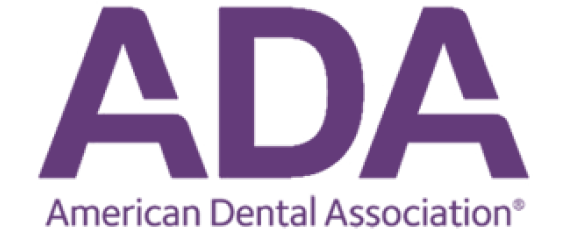Understanding Dental Anxiety in Orthodontic Patients
Nervousness about dental work is common, ranging from mild to severe anxiety. Concerns about pain, discomfort, or unfamiliar appliances often contribute to this fear, which can affect visits and treatment adherence. However, options like clear aligners or traditional braces provide choices that foster control. Choosing orthodontics enhances your oral health and smile, potentially easing worries. Here, we explore common triggers of dental anxiety during orthodontic treatment.
Impact of Anxiety on Orthodontic Treatment Choices
Choosing between clear aligners and traditional braces often depends on dental anxiety. Those with mild fear may prefer clear aligners due to their removability and discreet appearance. In contrast, some find comfort in metal braces, viewing them as a reliable option despite their challenges. Attitudes toward one’s smile also play a role; some opt for less noticeable options, such as lingual or ceramic braces, while others prioritize quick results with traditional braces. Ultimately, the best choice ensures comfort and safety for the teeth and aligns with personal treatment goals.
Overview of Clear Aligners
Bulky dental braces are no longer the sole option for orthodontic treatment. Clear aligners offer a discreet and removable solution for tooth movement, enabling individuals to maintain their lifestyle while achieving a more attractive smile. Custom-made trays effectively guide teeth into place, making modern aligners a popular choice for those seeking an appealing and effective method for straightening their teeth. Let’s explore how these clear aligners work.
How Clear Aligners Work
Clear aligners are custom-fitted to shift your teeth into the correct position gently. Modern orthodontics ensures smooth movement with minimal discomfort. Wear them for about 22 hours daily, switching sets every two weeks for optimal results. Their removable design facilitates easy cleaning and supports good oral hygiene after meals. Aligners are optimal for mild to moderate dental issues but may not be suitable for cases requiring extraction or surgery. If comfort and aesthetics are important, aligners are an excellent choice.
Types of Clear Aligners Available in the US.
Clear aligners from various US brands, including Invisalign®, ClearCorrect®, and Spark Aligners, cater to different needs. They are nearly invisible, removable, and ideal for mild to moderate tooth movement. When choosing a brand, individuals consider budget, durability, and treatment speed. While all use similar technology, some offer enhancements for added strength or faster results.
Brand Name | Key Features
- Invisalign®: Custom-fit; suitable for most dental issues.
- ClearCorrect®: Affordable; designed for comfort and strength.
- Spark Aligners: Nearly transparent for an improved smile.
For significant dental issues, traditional braces may be a more effective option.
Overview of Traditional Braces
Traditional metal braces use metal brackets and wires to straighten teeth. Unlike removable appliances, they are fixed in place for continuous use. While more visible than clear aligners, traditional metal braces offer better control for complex issues, such as significant gaps or jaw alignment problems. Patients can also opt for ceramic or lingual braces for a different look. Now, let’s explore how metal brackets facilitate tooth movement!
How Braces Function
Braces gently align your teeth using metal brackets and archwires. The wires are gradually tightened over time. Elastic bands enhance effectiveness by applying targeted pressure. While initial soreness is common, most adapt quickly. Braces can correct minor gaps and major misalignments. Regular checkups and adjustments will lead to noticeable improvements.
Different Types of Braces Used Today
- Metal Braces: Classic stainless steel braces that are strong but highly visible.
- Ceramic Braces: Tooth-colored brackets that are less noticeable.
- Lingual Braces: Placed on the back of teeth, making them virtually invisible.
- Self-Ligating Braces: Use clips instead of elastic bands for quicker adjustments.
- Gold-Plated Braces: Aesthetic option suitable for those with nickel allergies.
Each type varies in appearance, comfort, and effectiveness. Your treatment will begin with planning, followed by brace installation and regular checkups.
Treatment Process and Duration
Orthodontic treatment durations vary based on the type chosen and the degree of tooth movement required. Clear aligners typically take 12 to 24 months, requiring multiple trays. The amount of time traditional braces may take tends to be longer, especially in complex cases. Selecting the right treatment is crucial for managing time and achieving desired results. Regular checkups are essential, regardless of whether you use clear aligners or traditional braces, as they allow you to monitor your progress. Let’s explore what comes next!
Step-by-Step Journey with Clear Aligners
Clear aligner treatment begins with detailed checks of your teeth, typically using 3D scans and molds. Aligner trays are then created to fit your mouth. Your orthodontist will guide you on how and when to wear them. You’ll receive new trays every two weeks as your teeth shift. This process allows for steady changes without disrupting your daily activities. The removable aligners make it easy to maintain oral hygiene during treatment. For optimal results, wear the aligners for at least 22 hours a day. Upon completion, your teeth will be straighter, boosting your confidence in their appearance.
What to Expect with Braces Over Time
Brace wearers will gradually notice changes in their teeth alignment. Orthodontists tighten archwires and change rubber bands every few weeks to guide the movement. Initially, metal braces can cause soreness, particularly in the upper and lower front teeth; however, discomfort typically decreases over time as your mouth adjusts. Dental wax and medication can alleviate gum irritation. Once your teeth are straight, retainers are necessary to maintain alignment. Regular orthodontist visits ensure your smile stays intact after braces removal.
Suitability for Anxious Patients
Patients with dental anxiety often seek orthodontic options that minimize stress and discomfort. Clear aligners and traditional braces offer varying levels of control and comfort during treatment, helping patients feel more at ease. Many prefer clear aligners for their discreet appearance and ease of care, while braces may be more effective for severe alignment issues. Choosing the right treatment can enhance both your smile and your peace of mind. Let’s explore why aligners might be an ideal choice for individuals seeking to alleviate anxiety.
Why Clear Aligners May Ease Anxiety
Those with dental anxiety often prefer clear aligners for several reasons. They are removable, providing greater control over daily life compared to fixed appliances. Their subtle appearance reduces self-consciousness, easing nerves around others. With smooth edges that minimize gum irritation, they can be worn comfortably for extended periods of time. Cleaning is simple, requiring no special tools. Overall, clear aligners prioritize comfort, aesthetics, and choice without compromising the effectiveness of treatment.
When Braces Might Be the Better Choice
For severe cases, such as complex malocclusions, traditional braces are often the most effective treatment. Their sturdy design allows for advanced tooth movement, addressing issues that aligners can’t. Braces apply steady pressure to correct overlapping teeth and misaligned jaws. While some may find braces unattractive, their results often outlast those of other options. For a discreet look, consider lingual braces. Consult your orthodontist to determine if metal braces are the best option for achieving healthy teeth in the long term.
Schedule Your Appointment
The team at Sensational Smiles will work with you to determine which orthodontic treatment best suits your needs and answer any questions you may have. Schedule your appointment to take the first step to a straighter smile.











